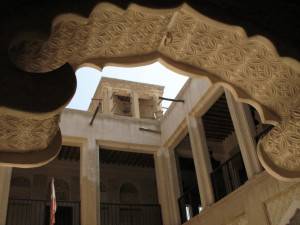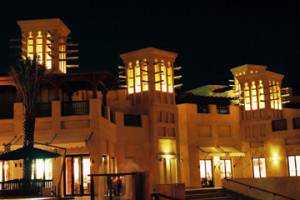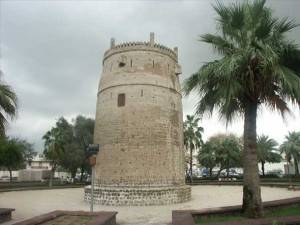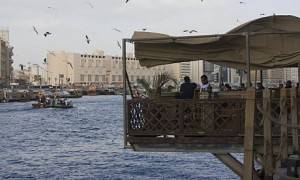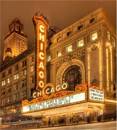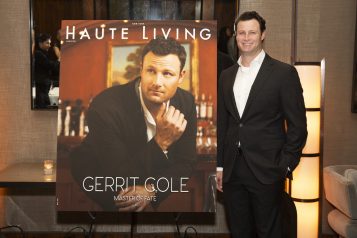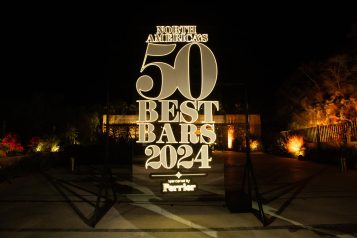Renowned for its incredible high-rises, luxurious hotels and resorts, extravagant nightlife, and overall bling culture, one easily forgets the Dubai of a bygone era. For anyone who says that Dubai has no historical soul needs to read a bit of the city’s history as well as check out the following historical landmarks which reinstate the roots of this uber-modern city. A trip to these remnants of Dubai’s earlier days makes you feel as if you’ve journeyed back in time.
Grand Mosque
As with any trip to a Muslim country, you will most likely hear the call to prayer before you see the place of worship. One of the most beautiful historical landmarks to visit is the Dubai Mosque. With a seating capacity to accommodate up to 1200 worshippers, it is easily one of the largest mosques in the United Arab Emirates. It opened in 1990 as a kuttab (Quranic School) where children went to memorize and recite the Quran. Constructed in traditional Islamic architectural style it was rebuilt in 1998 while maintaining its original style and now claims the tallest minaret in Dubai at 70 meters (231 feet) high. The structure consists of 45 small domes in addition to 9 large ones with sand colored walls and wooden shutters. Its refined decoration is done in Persian style and contains intricate stained glass panels on the larger domes and blue mosaic work. Although non-Muslims are not permitted entry, they are allowed to visit the minaret. The best time to see the Grand Mosque is at night when the domes are spectacularly lit exuding a charming presence over the entire city.
Al Ahmadiya School
The first regular school built in Dubai in 1912, a visit to this landmark will teach you about the history of education in Dubai. Religious men called “Al-Muttawa” served as teachers in private homes. Education was limited to religious teachings of the Holy Koran, writing, arithmetic and Arabic calligraphy. During the early 1900s Al Ahmadiya and other schools began to open offering students a range of subjects including the study of literature and various sciences. Students were organized by their age and ability to memorize the Koran. They traditionally sat on mats rather than at desks. In 1956, Dubai enacted a formal education system and the Al Ahmadiya school incorporated the use of classrooms and additional subjects such as English, sociology and Science. The Al Ahmadiya School is located in the Al-Ras area of Deira and was renovated in 1995 to be used as the Ministry of Education. The visitor will uncover a large courthouse with more than ten rooms; the oldest parts of the building date to the 1890s. The Al Ahmadiya School is worth a visit not only for its historical relevance but for its aesthetic beauty.
Saturday- Thursday 8:30am- 20:30pm and Friday 14:00-20:30pm (04 2260286)
Bastakia Quarter
The Bastakia Quarter was the original center of Dubai in Bur Dubai located near the Dubai Creek. It was originally built by Persian merchants trading in Dubai during the late 1800s who consequently named it after the town Bastak in Iran where many of them came from. The Bastakia is now known for its many art galleries which line the streets as well as for its restored windows which total fifty-five in all. A wonderful and charming area which resonates Dubai’s past as well as celebrates present-day artistry and creativity.
Open everyday from 10am-10pm Architectural Department (04 3539090)
Burj Nahar
Located in Deira, the Burj Nahar is one of three watchtowers which at one time guarded the city from foreign invaders. It was built in 1870 and was restored in 1992. Popular among tourists, historians, and photographers, the tower is also surrounded by beautiful and exotic gardens making it a real treasure worthy of an escapade for tourists and Dubai dwellers.
Bait Al Wakeel
The first office building in Dubai, the Bait Al Wakeel was built in 1934 by the late Sheikh Rashid bin Saeed Al Maktoum. It was restored in 1995 and is renowned for its distinct architectural and aesthetic characteristics. Today it serves as a wonderful heritage restaurant. You’ll be seated on a platform hovering over the Dubai Creek while you watch dhows and water taxis pass by. The food is traditional Arabic with regular dishes of moutabal, tabouleh, hummus and falafel and delicious meat entrees such as shish tawouk and lamp chops served with the accompanying basket or warm Arabic bread. No Alcohol is served but you will easily revel in Dubai’s past while enjoying an authentic Arabic meal.
Visiting hours: 12pm- 12am (04 3530530)







